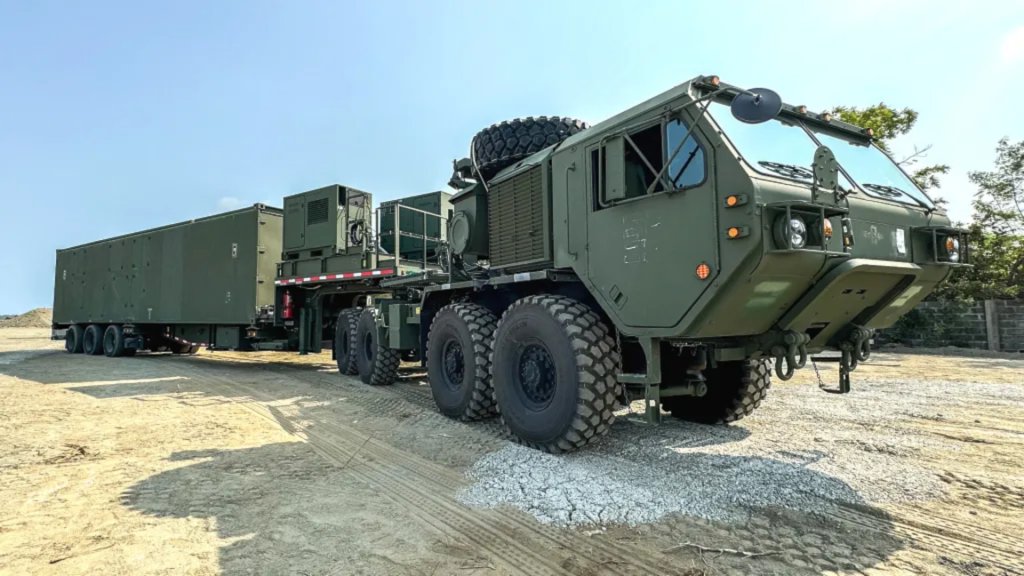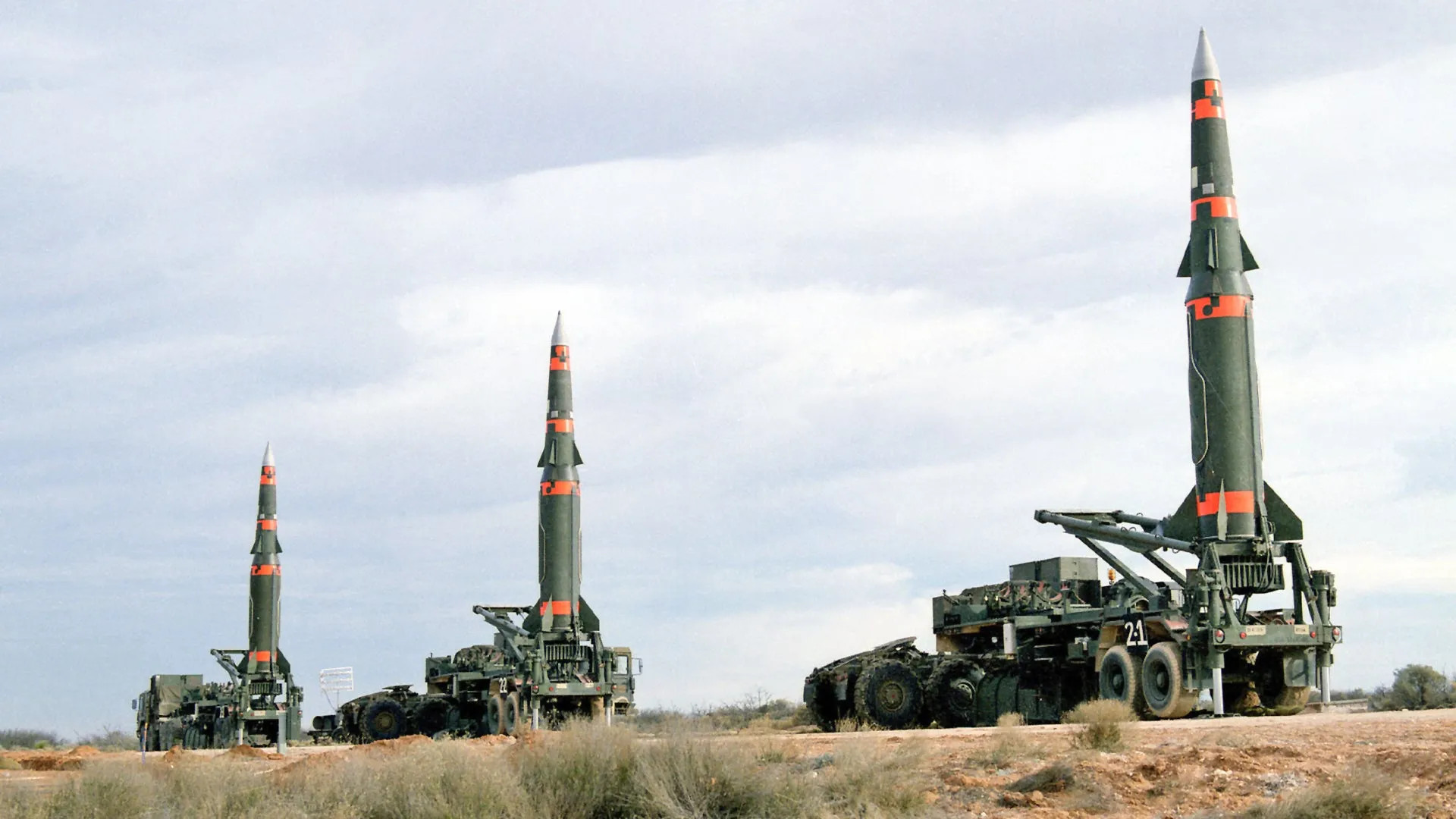The U.S. Army could be in line to get nearly $640 million in extra funding for new medium-range ballistic missiles (MRBM), including ones capable of hitting ships at sea.
Work on MRBMs, a long-range strike capability the Army has not had since the end of the Cold War, is one of a slew of efforts that would be accelerated by a $150 billion defense spending package recently proposed by members of Congress. The Army is already looking at a medium-range version of its Precision Strike Missile (PrSM) short-range ballistic missile, but the legislation on the table now may also point to a new design in the works.

The current Republican Party chairs of the House and Senate Armed Services Committees rolled out the proposed multi-billion-dollar defense spending legislation yesterday. If passed and signed into law, it would provide funds to accelerate work on a host of advanced capabilities across the U.S. military, including, but certainly not limited to, the Air Force’s F-47 and Navy’s F/A-XX sixth-generation stealth fighter programs, the B-21 Raider stealth bomber, the Sentinel intercontinental ballistic missile, a new sea-launched nuclear-tipped cruise missile, new medium landing ships for the U.S. Marine Corps, and President Donald Trump’s Golden Dome missile defense initiative. Additional funding to help expand the U.S. defense industrial base to meet these and other demands, as well as spur further research and development, is also part of the package.
When it comes to Army MRBMs, the spending plan includes four separate provisions amounting to a combined $639 million:
- “$175,000,000 for production capacity expansion for next-generation Army medium-range ballistic missiles”
- “$50,000,000 for the accelerated development of Army next-generation medium-range anti-ship ballistic missiles”
- “$114,000,000 for the production of Army next-generation medium-range ballistic missiles”
- “$300,000,000 for the production of Army medium-range ballistic missiles”
The legislation does not name any specific Army MRBM program, and TWZ has reached out for more information.
For some immediate context, MRBMs are categorized as ballistic missiles with maximum ranges between 620 and 1,860 miles (1,000 and 3,000 kilometers). The Army has not had an operational MRBM of any kind since the retirement of the nuclear-armed Pershing II in 1991. Furthermore, between 1988 and 2019, the United States and Russia were both prohibited from developing and fielding nuclear or conventionally-armed ground-based ballistic and cruise missiles with maximum ranges between 310 and 3,420 miles (500 and 5,500 kilometers) under the Intermediate-Range Nuclear Forces (INF) Treaty.

Since the collapse of the INF, the Army has been openly working to extend the range of its Precision Strike Missile (PrSM), which is still currently described as a short-range ballistic missile (SBRM). SRBMs have maximum ranges between 190 and 620 miles (300 and 1,000 kilometers). As of 2023, the baseline PrSM had demonstrated the ability to fly out to just under 310 miles (500 kilometers), and the Army’s goal was to stretch that out to around 400 miles (650 kilometers), according to a declassified Pentagon Selected Acquisition Report.
The Army currently has stated plans for a variant or derivative of the PrSM with the ability to reach targets at least 620 miles/1,000 kilometers away, as well as one with even greater range that would push it into MRBM territory. These are presently referred to as the Increment 4 and 5 versions, respectively. The service is also working on an Increment 2 anti-ship type based on the baseline PrSM SRBM, but with a new seeker, a prototype of which was successfully tested against a moving target vessel last year. Increment 3 of the PrSM program is focused on adding unspecified “enhanced” payloads to the missile, which could include swarms of loitering munitions.

The proposed Congressional plus-up of Army MRBM work could revolve entirely around plans for extended-range versions of the PrSM. However, the separate provisions for “next-generation medium-range ballistic missiles” and “medium-range ballistic missiles” might also point to work on, or at least plans for, additional MRBM capabilities beyond the PrSM family.
In the wake of the collapse of the INF Treaty in 2019, the Pentagon did announce a test of what it described at the time as a “conventionally-configured ground-launched ballistic missile,” which still has not been definitively identified. Earlier that year, U.S. officials had also announced plans to test an unspecified ground-based intermediate-range ballistic missile (IRBM). IRBMs have maximum ranges between 1,864 and 3,418 miles (3,000 to 5,500 kilometers).
The Army has previously disclosed that the hypersonic missile under development for its Dark Eagle weapon system, also known as the Long Range Hypersonic Weapon (LRHW), has MRBM-like range. This is a common missile that the U.S. Navy also plans to fire from its Zumwalt class stealth destroyers and Block V Virginia class submarines. The Navy portion of the joint program is known as Intermediate Range Conventional Prompt Strike (IRCPS).
At the same time, while the Dark Eagle/IRCPS missile has a ballistic missile-like external appearance, the U.S. military does not refer to it as one. It also functions in a completely different way by releasing an unpowered hypersonic boost-glide vehicle, as you can read more about here. The newly proposed defense spending package includes separate provisions to increase funding explicitly for hypersonic strike capabilities, as well. For reference, hypersonic speed is typically defined as anything above Mach 5.

A purpose-built MRBM rather than one derived from an SRBM would offer the potential for increased overall performance and greater survivability, including through increased payload capacity that could allow for the addition of new decoys and other countermeasures against anti-missile interceptors. It could be easier to scale up that design even further, as well.
At the same time, a new missile designed from the ground up as an MRBM would likely require a new, larger launcher, which could impose limitations on its deployability. The Army has previously expressed interest in shrinking down its Typhon missile system with its track-trailer-based launchers for this reason. Dark Eagle is also fired from tractor-trailer-based launchers. The goal so far is for extended-range PrSMs to be launchable for the same wheeled M142 High Mobility Artillery Rocket Systems (HIMARS) and tracked M270 Multiple Launch Rocket Systems (MLRS) that can fire the baseline version now.
Regardless, any kind of MRBM capability, especially one with the added ability to strike moving ships, would give the Army an entirely new way to prosecute targets on land and at sea hundreds of miles away. Ballistic missiles also travel at very high speeds, with larger types reaching hypersonic velocities in the terminal phase of flight, making them well-suited to targeting time-sensitive threats and presenting additional challenges for defenders. High terminal speed provides an inherent ability to burrow deeper into hardened targets, as well.
Army MBRMs could be particularly relevant in a future high-end fight against China in the Pacific, where options for forward-deploying land-based long-range missiles could be limited, in general, for political and geographical reasons. The service has already prompted the ire of the Chinese government with the deployment of a Typhon system in the Philippines. From where it is positioned now, Typhon, which can fire Tomahawk cruise missiles and SM-6 multi-purpose missiles, can reach areas in the southeastern part of mainland China.

PrSM, Typhon, and Dark Eagle reflect a larger push to expand U.S. ground-based missile capabilities with a particular eye toward the Pacific that also extends to the Marine Corps. The Marines just recently sent one of their Navy-Marine Expeditionary Ship Interdiction Systems (NMESIS), capable of firing Naval Strike Missiles (NSM) that can attack targets at sea and on land, to a Philippine island in the middle of the highly strategic Luzon Strait as part of this year’s iteration of the multi-national Balikatan exercise.

The Marines are also fielding Long Range Fires (LRF) launchers that use the same underlying uncrewed vehicle as NMESIS, but can each fire a single Tomahawk before needing to be reloaded. The Army is now eyeing the LRF launcher as one possible complement to Typhon. Uncrewed launcher vehicles, which the Army has a broader interest in, present additional benefits when it comes to being able to push further in forward areas while minimizing risk to friendly personnel.
For its part, China’s People’s Liberation Army (PLA) has amassed a huge force of tactical land-based ballistic missiles ranging from SRBMs to IRBMs, including anti-ship types, as well as a similar array of ground-launched cruise and hypersonic missiles. The current gap between U.S. and Chinese ground-launched missile capabilities has been a key driver behind work to expand the PrSM’s range and otherwise build up the Army’s long-range missile arsenal.

The Army has also previously announced its intention to begin conducting at least rational deployments of new ground-based long-range missile systems to Europe in the coming years. In 2021, the service reactivated the 56th Artillery Command in Germany to support those plans. Last active between 1963 and 1991, the 56th Artillery Command had notably overseen Pershing and Pershing II missile units in Europe during the Cold War. New Army MRBMs in Germany or elsewhere on the continent would send a particular message to Russia. The Russian military just demonstrated a new IRBM called Oreshnik in an attack on Ukraine last year, which sent similar signals to European capitals.
MRBMs could also offer the Army a lower-cost and less complicated alternative to hypersonic weapons, which the entire U.S. military has suffered difficulties in developing and fielding. The Army only successfully launched a Dark Eagle missile from one of its trailer-based launchers for the first time last year after two years of failed attempts to do so. In an annual report released earlier this year, the Pentagon’s Office of the Director of Operational Test and Evaluation also raised questions about the weapon’s lethality.
An Army MRBM capability could be of interest to other branches of the U.S. military, including for launch from platforms in other domains. As already noted, the Army and the Navy are cooperating now on Dark Eagle/IRCPS, and there is something of a global trend emerging when it comes to arming surface warships with ballistic missiles.
With plans for extended-range versions of the PrSM, the Army is already moving toward expanding its ground-based ballistic missile force into one that could again include MRBMs. Congress is now poised to potentially add hundreds of millions of additional funding to help speed up those efforts, which may also point to new types of missiles on the horizon.
Contact the author: joe@twz.com
